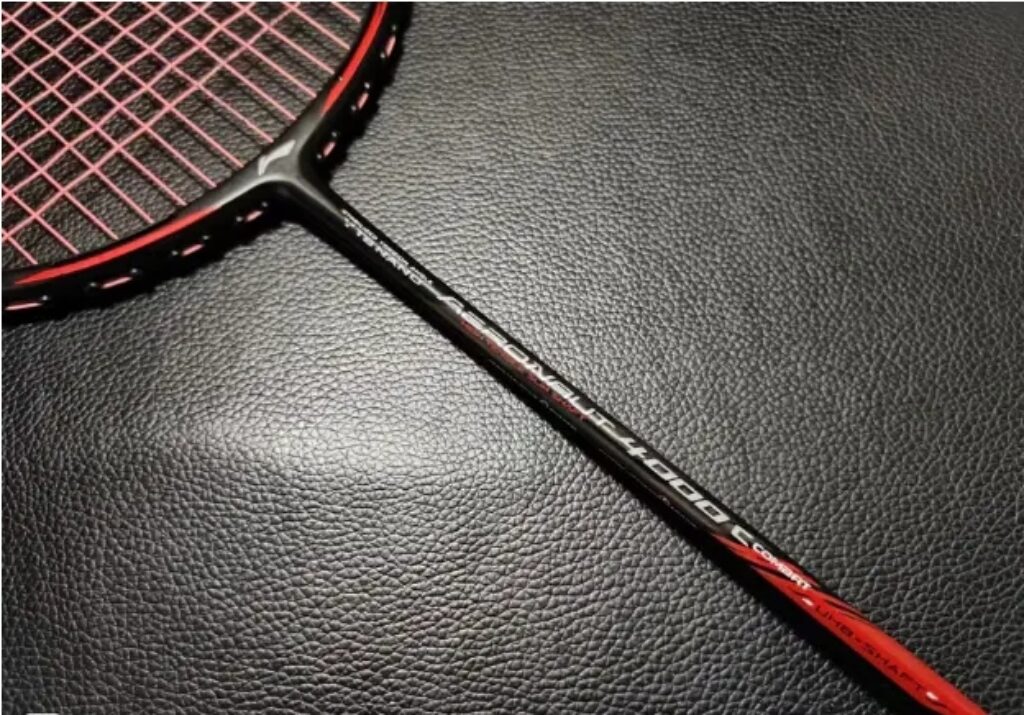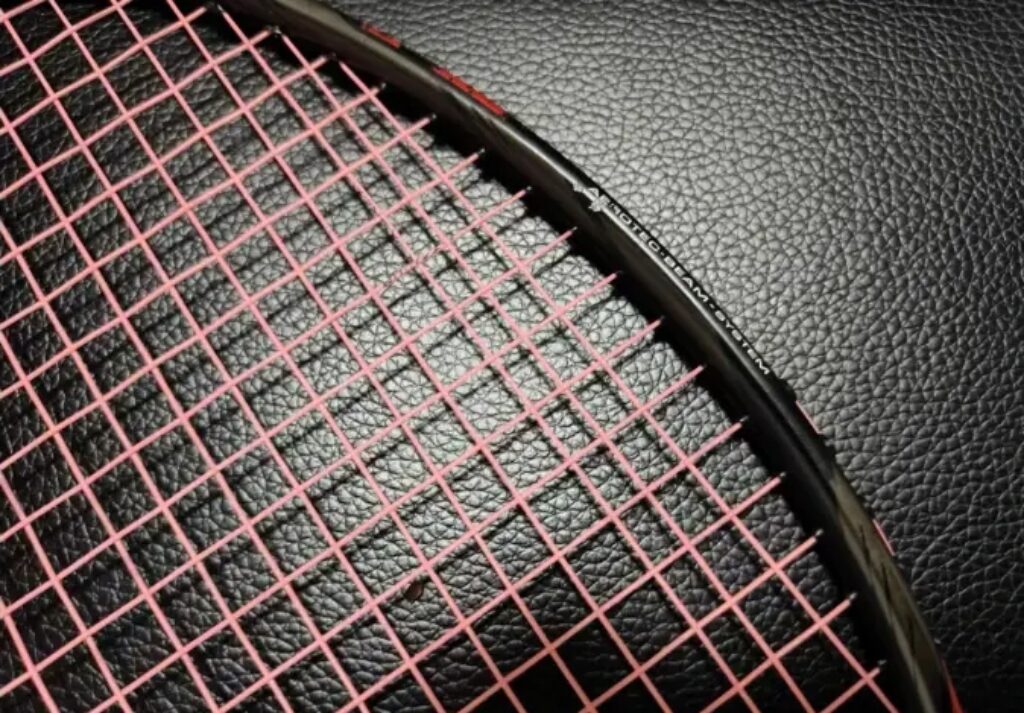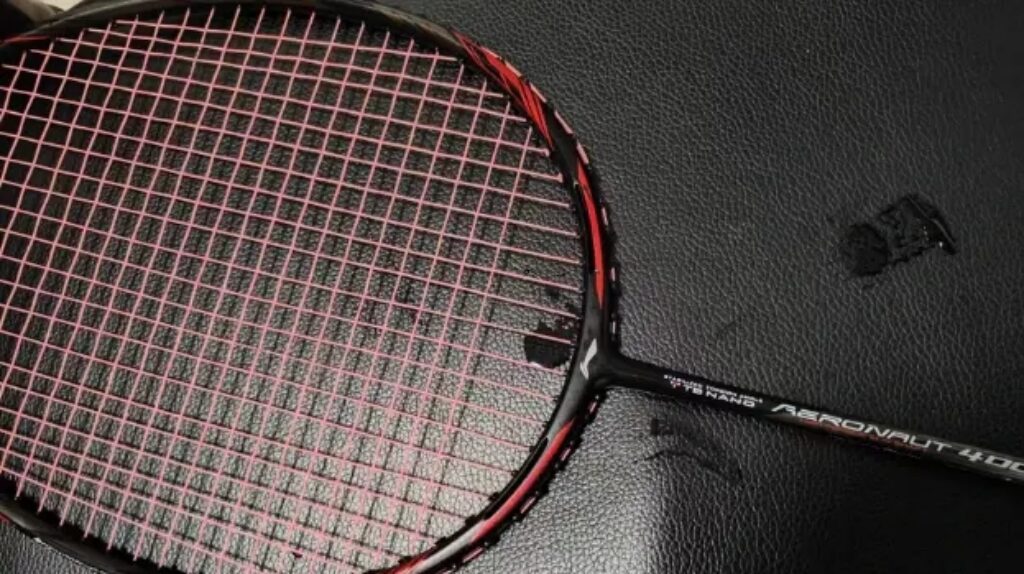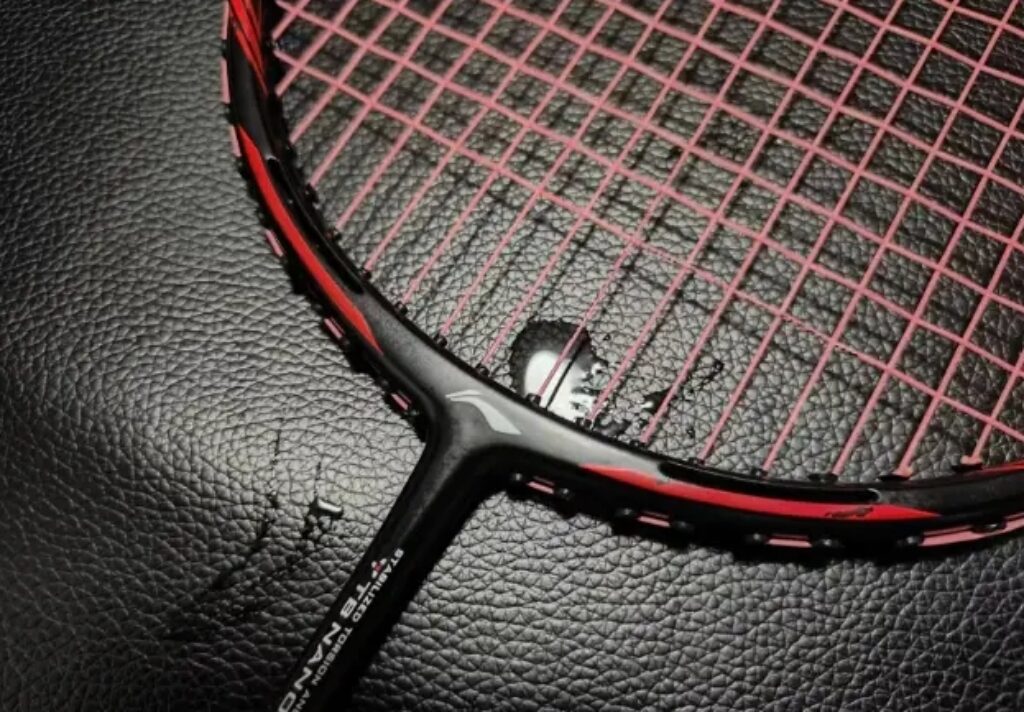C for Combat is generally regarded as a mid-range Li-Ning product emphasizing attacking play, regardless of its release sequence. The Wind Storm 4000C, launched in 2017 alongside the Wind Storm 4000, is designed with an attacking mindset. Above it in the lineup is the Wind Storm 5000, which has a strong attacking feel.
1.The release time was early, and 2. Being positioned between two numerical models, rackets in such a “gap” often suffer from unclear positioning and can create marketing dilemmas.

Specifications:
- Weight: 3UG5
- No base grip
- Total Weight (used condition): 88.81g
- Balance Point: 311mm
- Shaft Length: 218mm
- Stiffness: Moderate
- Frame: Box frame
- Wind Tunnel: 4 and 8 o’clock
- String Bed: 72-hole
- String Groove: 9-3 o’clock
- Warranty: 30 pounds
- Recommended String Tension: 25-26 lbs BG65TI
As expected from its release time, the Wind Storm 4000C has only a color difference from the Wind Storm 4000, changing from gold to red to emphasize aggression. The racket’s details and technological applications don’t require further elaboration; it probably reused the same shaft as the 4000. However, the length has been restored to the standard 675mm, making it visually more appealing.

This racket should be a typical 3U head-heavy model. In the balanced Wind Storm series, treating the 4000C as an attacking racket is reasonable. Although the 4000C initially feels heavy in the hand, it becomes lighter after warming up, similar to the Wind Storm 9000, which feels lighter in use despite appearing heavy. Although labeled as 3U, I suspect the empty weight is just around 85g, making it feel closer to the Wind Storm 4000B compared to the Wind Storm 5000.
Unlike the Wind Storm 5000, the 4000C has slightly higher stiffness, so the sweet spot sensation experienced with the Wind Storm 5000 is somewhat reduced. During high-clear warm-ups, the 4000C feels less tactile, with good elasticity, friendly driving, a consistent sweet spot, smooth power generation, and satisfactory placement. However, it doesn’t produce a satisfying smash.

Despite the C suffix indicating a more attack-oriented model in the series, the 4000C feels quite balanced, similar to the Wind Blade 600C. The 600C’s shaft is stiffer and more decisive in shot-making. Compared to the Wind Blade 300C, the 4000C is lighter, making it hard to determine which has better attacking efficiency.
I initially had several perfect smashes go into the net, possibly due to low string tension or the racket’s torsional resistance issues, with the former being more likely.

In fast drives and blocks, the 4000C doesn’t exhibit the same delay as the Wind Storm 4000, and its weight doesn’t compromise agility. In fast-paced rallies, as long as the racket is positioned correctly, it maintains good continuity, though the long shaft still affects recovery speed. During the test, I wasn’t too concerned about opponents’ backcourt shots and could focus on maintaining continuity at the net.
Defensively, the racket handles opponents’ smashes effectively but is less efficient for backhand returns, affected by the shaft’s elasticity and weight.

I initially thought it might be more suited for singles, especially with BG65TI strings, but found it a bit challenging for men’s singles; it might be easier for women. I’m surprised by the discrepancy between my experience and the reviews, which align more with my pre-test expectations. Maybe my game has improved?
Overall, this isn’t a difficult racket for beginners, and the C suffix shouldn’t be intimidating. Among the three Wind Storm models, I am most satisfied with the Wind Storm 4000B. Thus ends my review of the Wind Storm 4000 series.

Leave a Reply